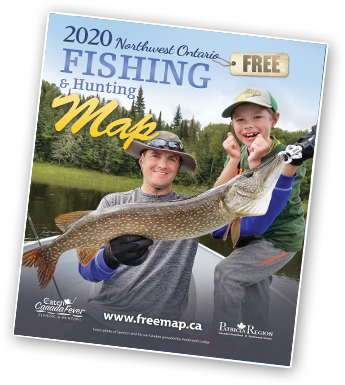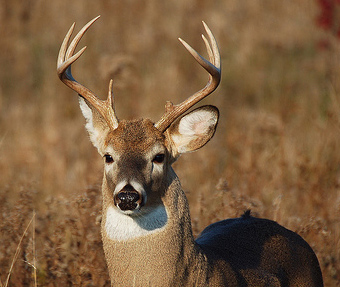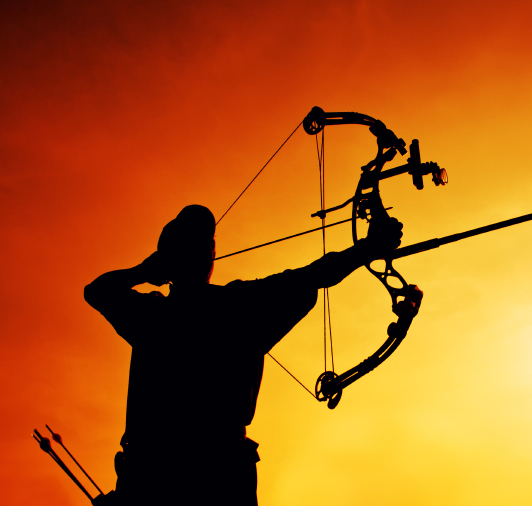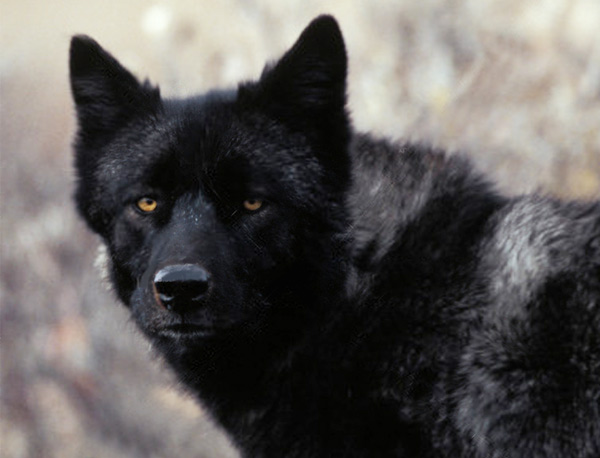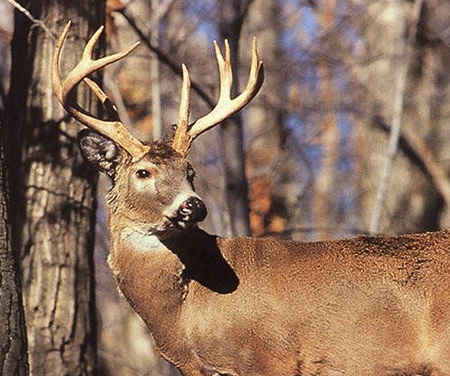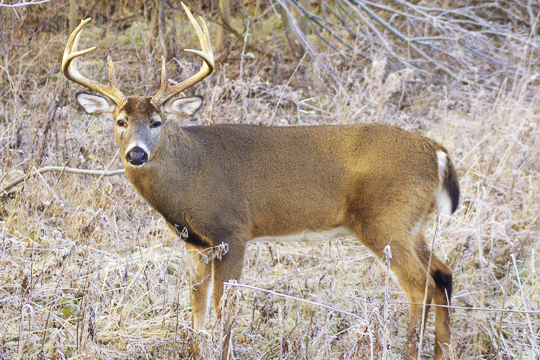Myths are stubborn things. They don’t want to go away, and many stay around for years despite the mountains of evidence to prove them false. The following are a few of the more commonly encountered bow-hunting myths. Of course one man’s mythology can be another man’s religion and I don’t want to impugn anyone’s religion. Instead think of this article as a challenge to some common assumptions.
A Tuned Bow is an Accurate Bow
 While tuning and accuracy are related, they are not the same thing. It’s possible to shoot an unturned bow accurately and it’s also certainly possible to shoot a perfectly tuned bow inaccurately. In fact, both happen quite often. The purpose of tuning a bow is to ensure good arrow flight, which is important of multiple reasons. Firstly, it makes any set up more forgiving. A shot from a poorly tuned bow that would be off by a foot because of an error in shooting form might be off by in the case of a well-tuned bow.
While tuning and accuracy are related, they are not the same thing. It’s possible to shoot an unturned bow accurately and it’s also certainly possible to shoot a perfectly tuned bow inaccurately. In fact, both happen quite often. The purpose of tuning a bow is to ensure good arrow flight, which is important of multiple reasons. Firstly, it makes any set up more forgiving. A shot from a poorly tuned bow that would be off by a foot because of an error in shooting form might be off by in the case of a well-tuned bow.
Good arrow flight is particularly important when shooting broad heads. A poorly tuned bow might shoot field points with a high degree of accuracy, but replacing the field points with broad-heads might -and probably will- result in broad-heads that not only have a far different point of impact, but that don’t group well either.
Finally good arrow flight contributes to proper penetration. An arrow that is flying true and straight will concentrate its energy on a single point; an arrow that is fishtailing or proposing or even both will waste a great deal of energy slapping to one side, impeding penetration.
Mechanical Broad-heads don’t work.
Most hunters tend to shy away from mechanical arrows after having been soured to them with bad experiences. This, however, might not be the case. In recent years, production of mechanical broad-heads has increased exponentially. While maybe not ideal for taking down larger game such as moose or grizzlies, mechanical broad-heads do wonders for taking down animals as large as 300 lb. whitetails and huge black bears.
Are there still some not-so-good mechanical broad-heads on the market? Defiantly, but that goes the same for blade-heads as well.
If Your bowstring looks Good, it’s O.K
The problem with this is that strings can wear under the serving, either the center serving or one of the ends. This shouldn’t be a surprise, since these areas are where strings experience the most stress.
Some strings last longer than others, and to some extent how long your string will last depends on how often you shoot, it’s difficult to make generalizations here. If you are a competitive shooter and shoot frequently throughout the year, your bow string probably wont last the year. However, the typical bow hunter who practices less often should get at least a couple of years out of their strings as long as they have been properly cared for; which means waxing the strings regularly, keeping it dry as much as possible, and avoiding extreme temperatures, such as the inside of a car on a sunny day.
Regular inspection is also important. A little fuzzing on the outer fibers of a string is generally not a cause for concern, but a broken strand is. Keep in mind that visual inspection wont show you what is beneath the servings.
With today’s Carbon Arrows and More-Forgiving Bows, Spine Doesn’t matter
It is true that today’s bows are more forgiving, and that a given carbon arrow can cover a range of spines and that took several different aluminum arrows to cover? Having said that, proper and consistent spines are still the most important determining factor of potential accuracy in all the commonly measured characteristics. Arrows straightness or weight may vary slightly and still perform well enough that few shooters can tell the difference.
Top shooters often find that in a given batch of a dozen arrows, 1, 2 or even 3 arrows will not group properly with the others. The reason usually being the spine. That is why hunters should number their arrows and pay attention to how they group. If one arrow consistently hits outside, or at the outer edges of the group, put it aside. One fix that can work in this situation would be to rotate the nock, a very slight reorientation can make all the difference.
The Best Broad-heads are the most durable broad-heads
 The purpose of a broad-head is to cause the death of an animal, through hemorrhaging, as quickly as possible. It’s helpful to have broad-heads that puncture a large hole to produce an easy-to-follow blood trail. Any broad-head that has done these things has done it’s job. This is not an argument against durability and a broad-head that routinely loses or appears to collapse on well placed shot is an inferior broad-head.
The purpose of a broad-head is to cause the death of an animal, through hemorrhaging, as quickly as possible. It’s helpful to have broad-heads that puncture a large hole to produce an easy-to-follow blood trail. Any broad-head that has done these things has done it’s job. This is not an argument against durability and a broad-head that routinely loses or appears to collapse on well placed shot is an inferior broad-head.
The fact is that any broad-head that comes into contact with bone is likely to have bent blades, broken blades or even a shorn-off blade. A case can be made that it is better for a blade to shear off or bend, allowing the broad-head to continue penetrating as opposed to remaining unbent and firmly affixed in a way that stops penetration.
Bow Hunters should Not Shoot at Game Beyond [Insert Distance]
It’s true enough that there is a distance beyond which a bow hunter should not shoot at game. The thing is, distance can vary hunter to hunter. If hunter practices at 70 yards regularly and is confident he can make a kill shot, there is no reason for him to not take the shot. Having said this, shooting a practice target at 70 yards is a lot different than shooting a mule deer in an alpine meadow at 70 yards. There is “buck Fever” to contend with. The shot could be uphill or downhill. The hunter could be cramped from sitting motionless for hours. There is a host of other factors including, wind, the alertness of the animal and the possible presence of other animals all factor into the shoot/don’t-shoot decision at that critical moment. The better shots I now are conservative about their range, but shoot confidently at paper target well beyond any shot they would take out hunting.
3-Inch Groups at 30 Yards = 6-inch groups at 60 Yards
Not really. It does seem like a reasonable theory, but from what I have learned is that the only way to shoot well at 60 yards, is to practice at 60 yards. Speculation as to why its theory doesn’t hold seems to suggest a number of things. There is an intimidation factor at the longer ranges. There could also be a vision factor – the sight pin may blot out the bull’s-eye or enough of it to affect precision at longer ranges. These conditions would hold true even if we were shooting in a vacuum. A small gust of wind that would have little to no affect on an arrow at 30 yards may have quite a large affect on an arrow from 60 yards.
Paper tuning: A Tear-Left Means Move The Rest Left
Or vice-versa. How many times have you read this? Here is the truth: sometimes it works, often it doesn’t.
When the string is released, a tremendous amount of energy is used to drive the arrow forward. A multitude of factors, including vertical and horizontal nock travel, amount of tension on the rest, type of launcher arms, spine of the individual arrow, etc. play on the arrow as it travels forward. Predicting how all these factors will affect your shot is incredibly difficult, if not downright impossible. Personally, I believe paper tuning is the greatest way to tune a bow. My suggestion would be if you get a tear-left, try moving the rest to the left in small increments to see if it decreases the size of the tear. If it doesn’t, don’t be surprised or begin pulling at your hair, grinding your teeth or cursing. Try moving the rest in small increments to the right. Try moving your nock point up and down slightly. Consider the possibility that the arrow is not the correct spine.


